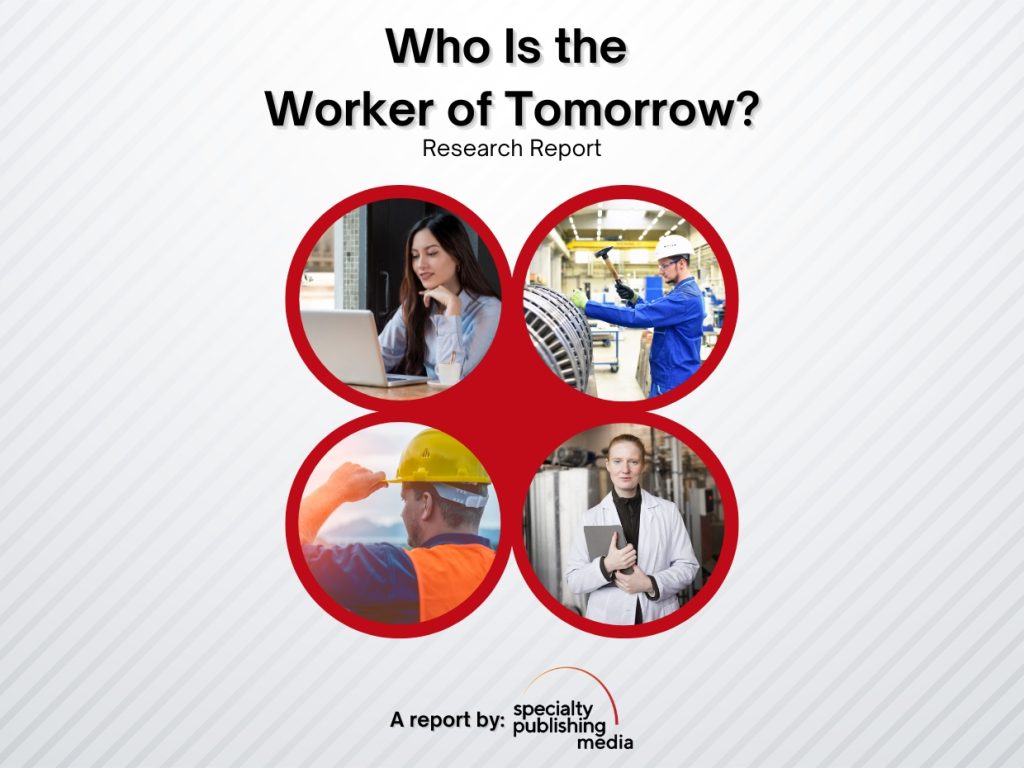-
A Cautionary Tale
 Peggy shares a cautionary tale and gives advice on how to best position our companies for the future of work. She says we can no longer do things the way we have always done them—we must consider new processes and innovations. She also discusses: If industrial manufacturing is up or down. The steps we need…
Peggy shares a cautionary tale and gives advice on how to best position our companies for the future of work. She says we can no longer do things the way we have always done them—we must consider new processes and innovations. She also discusses: If industrial manufacturing is up or down. The steps we need… -
AI and Structural Engineering
 Peggy Smedley and Tony Yang, professor of structural engineering at the University of British Columbia, Vancouver, talk about structural and earthquake engineering. He shares a little bit about himself and his research to ensure infrastructure can be built faster, have higher performance, and is more environmentally friendly. They also discuss: The types of advances we…
Peggy Smedley and Tony Yang, professor of structural engineering at the University of British Columbia, Vancouver, talk about structural and earthquake engineering. He shares a little bit about himself and his research to ensure infrastructure can be built faster, have higher performance, and is more environmentally friendly. They also discuss: The types of advances we… -
ERP Ahead
 Peggy Smedley and John Rosch, North American sales manager, Explorer Software, talk about the company and the Eclipse application. He says Eclipse is a construction accounting and project management ERP (enterprise-resource planning) solution for mid-sized contractors. They also discuss: Key features of the technology. What the development team is currently working on. The impact of…
Peggy Smedley and John Rosch, North American sales manager, Explorer Software, talk about the company and the Eclipse application. He says Eclipse is a construction accounting and project management ERP (enterprise-resource planning) solution for mid-sized contractors. They also discuss: Key features of the technology. What the development team is currently working on. The impact of…
What's Trending
We all know robots have long been used in many industries to create efficiencies in production. Now, we are seeing robots come to the rescue to reduce children’s stress before surgery, which could help aid six out of every 10 young patients who must undergo surgery suffering from stress before they receive anesthesia. Consider the example of an affective computing and social robot from a project at the UOC (Universitat Oberta de Catalunya). The small vehicle is equipped with AI (artificial intelligence) and sensors that can pick up signals about the child’s emotional state and react accordingly. Here is how this can help: Change color, make music, create smalls, and talk and interact with the children. Capture facial expressions, heart rate, and breathing patterns. Adapt to how the child is feeling by changing music, colors, or smells. The prototype was manufactured by the Hyundai car company in South Korea, and sent to Sant Joan de Déu Barcelona Children’s Hospital, where it was tested with 86 children between 3 and 9 years old who had to undergo a procedure between December 2020 and May 2023. Ultimately, this research will provide information about the potential and challenges involved in integrating affective technologies in pediatric hospital environments. The next step is to manufacture a new prototype, applying all the conclusions drawn from the pilot to conduct a clinical trial. However, the project is currently on hold due to a lack of…
Spring has sprung and sports are in full swing for many. New technologies—such as AR (augmented reality)—can help sports companies maintain fan engagement while intensifying media competition. Let’s explore how this market will evolve with the rise of AR. GlobalData forecasts the overall AR market will grow at a rate of 21% from $22 billion in 2022 to $100 billion in 2030. The report suggests fan experiences will offer the most lucrative and accessible opportunities for AR integration. Here is how this can help: Provide more engagement and analysis of events in broadcasting. Provide technology to help players—for example a 5G AR helmet for deaf American football players. Provide stadium-based AR mobile experiences to enhance live viewing. Looking to the future, we will continue to see the proliferation of both AR and 5G, which will ultimately lead to more widespread adoption in sports—everywhere from on the field, to in the stadium, to at-home viewing. The result will be greater opportunities for both players and fans…
Utilities face several challenges: expanding and growing the grid, repairing disaster struck areas, and providing data where and when people need it. This all comes at a time when projects are becoming more complex in an industry that needs to consider multi-agency planning. The solution comes in the form of AI (artificial intelligence) and digital twins. Consider the example of Looq AI, which is a hardware-enabled AI company that has developed a new camera AI technology. The Looq platform is a deep technology stack, with a proprietary Q camera system. This allows data to be captured in the field that then gets processed with Looq’s AI-based image-to-model software in the cloud. Ultimately, this will create geo-referenced 3D digital twins and topographic maps with survey-grade accuracy and AI semantic information. Here is how this can help: Capture a large amount of survey-grade data without drones or hundreds of manhours. Get access to the complete information needed for critical decisionmaking, while achieving operational savings. Simplify the process of generating geometrically precise, geo-reference, and intelligent digital twins. Looking to the future, we know Looq AI has secured $2.6 million in seed funding, which brings its total raised to $3.75 million to date. Continue to keep an eye on this trend, as it will likely continue to grow, offering new opportunities for the digital twin in…
In depth study of the worker of the future.
Social

-
Sustainability in South Carolina
Scott Byrne, director of global sustainability services, Sonoco, and Peggy Smedley talk about how the company is involved in South Carolina communities. He talks about some of the bigger one-off projects and sustainability stories in South Carolina. They also discuss: The rise of solar installations across the state and how it greens the grid. A…
-
Our Choices, Our Communities
Peggy Smedley and Kendall Daly, owner, Amend Market, talk about the choices we are making and how that impacts the communities we live in. She says it is really fun to watch people make choices that align with their values. They also discuss: The multifaceted issue and the multifaceted solution. The impact if we stop…
-
Refill, Reuse, and Landfills
Peggy Smedley and Kendall Daly, owner, Amend Market, talk about sustainability including refill, reuse, and landfills. She explains how she got started owning a single refill shop—and the importance of voting with your dollar. They also discuss: How the system works. Creative reuse ideas and examples of products in the shop. Why people like refill…
What You Missed
Utilities face several challenges: expanding and growing the grid, repairing disaster struck areas, and providing data…
The infrastructure construction market is facing numerous challenges: aging infrastructure, population growth, climate change, new burdens…
Juniper Research says CCaaS subscriptions by global business will generate $10 billion next year.










